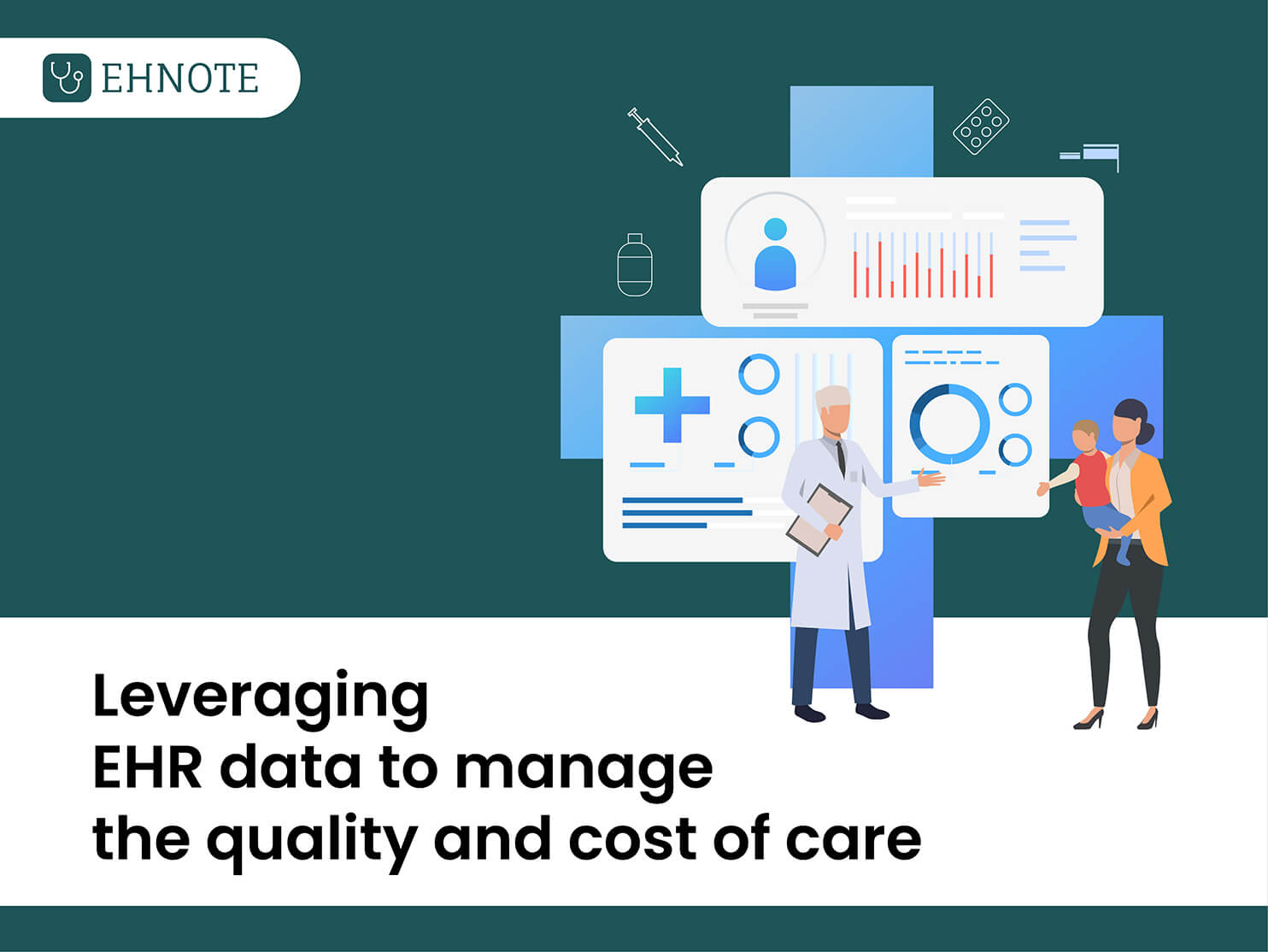How are you using your EHR data to manage the quality and cost of care?

Using EHR and Data – Their Importance
Electronic Health Records or EHR are treasure troves of data for researchers ever since the very early days of clinical recordkeeping. The widespread availability of EHRs is now enabling the access of health record data on a much larger scale.
EHR’s role in helping improve medical practice management by increasing practice efficiencies and cost savings is quite phenomenal. EHR contains huge data where each patient is represented by a record that integrates information objectively from different sources such as hospitals, laboratories, clinicians, physicians etc. Besides, the important function of EHR is that it provides a complete medical picture of a patient that enables the caregiver a comprehensive view before he/she proceeds with further treatment.
The secondary use for EHR data presents huge opportunities of improving healthcare at a larger level. The majority of practices are using EHR data only for external reporting purposes with a few of them using the data for self-evaluation or to upgrade or improve their care delivery process. EHR data if mined and reported in the right way is capable of giving a macro level understanding of care gaps and feedback from patients.
EHR data for improving patient outcomes – Analysis
The various reports generated by an EHR plays a significant role in helping care givers actively managing patients, tracking operational indicators and in meeting provisional and accreditation requirements. The EHR data can be powerful motivators for provider change with providers observing how they are performing against the practice as a whole with other providers in addition to deriving positive enforcement for those exceeding expectations.
The cost savings associated with EHRs are expected to come through the following factors such as-
- Better coordination of care
- Reduction of medical errors
- Adverse drug events or ADEs
- Increased efficiency and reduction of duplicate testing
The flow of EHR data at a faster pace ensures in improved patient flow, fewer duplicative tests, and quicker responses to patient inquires resulting in more complete capture of charges. With more than 1000 EHR applications are being published every month to increase the performance by ensuring the safe transfer of healthcare data that meets the patients’ expectations.
The data generated from the EHR measure prevention, process and outcome metrics. The faster data retrieval made possible through EHR is facilitating reporting of key healthcare quality indicators to the organization in addition to improving public health surveillance by immediate reporting of disease outbreaks such as the corona virus in recent months.
The emerging Machine Learning or Artificial Intelligence (AI) based strategies are helping in refining the healthcare industry’s information processing capabilities. The collective big data analysis of EHRs and other medical data is continuously helping in building a better prognostic framework.
The healthcare industry is providing services for healthcare analytics and clinical transformation are contributing to better and effective outcomes. In the end, it can be concluded that user friendly EHR technologies ensure the efficient and timely transfer of healthcare data for quality patient care and in meeting the needs of patients.
